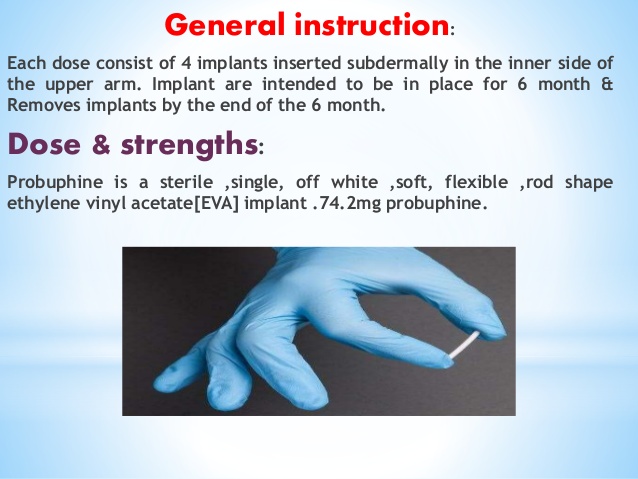After several delays, the FDA has approved a Suboxone (buprenorphine) implant for widespread use. It’ll be marketed as Probuphine.
The article linked above suggests that the implant is intended for use by patients who are already successful on conventional Suboxone, and will help sustain that success. A physician inserts a device the size of a matchstick beneath the skin; it releases a steady ‘ooze’ over a six month period, before it’s replaced. The implant “… is less susceptible to abuse or the illicit resale that plagues existing oral therapies.”
Presumably, once the implant is in place, nobody’s going to remove it in hopes of resale.
I was confused by the description of buprenorphine as “a less addictive alternative” to methadone. What does that mean? Both produce physical dependence, both can be abused, both are characterized by high rates of return to drug use if the patient stops taking it. A 6-month implant reduces the patient’s decision-making to twice a year, which should have a positive effect on retention.
Retention is a big issue with drug replacement therapies in general. Reports vary widely, but clinicians I’ve talked with suggest that one-year retention on Suboxone ranges from 20-60%, depending on the population. Many factors are in play. I’d speculate that one problem would be other drug use by maintenance patients. That could pull some back to the street life.
The manufacturer, Titan, estimates the market potential for Suboxone and other treatments at $2 billion annually, not including methadone and Vivitrol (monthly naltrexone injection). A lot of money, for sure. Implants are expected to account for some $250 million of it. The price? One report on a finance website put initial cost at $1500 for the implant itself, with replacement costs seven or eight months later — but a report I just saw on CBS News cited the cost as $6000 every six months ($12000 a year?). That concerns me, because new drugs ordinarily increase in price anyway over the first 5 years of availability.
A substantial number of patients will wind up taking these meds on a more or less permanent basis, so lifetime costs should be considered. The latest figures put Suboxone users in the USA at around one million, or about four times the number on methadone. We can expect those figures to climb, with implants accounting for perhaps 10-15% — once again, the patients who have already responded positively to Suboxone.
If of course the implants should be used to treat chronic pain, the size of the market increases.
I sure would like to see good research aimed at improving outcomes for those maintenance patients who decide to taper off the program. The patient on the CBS News report stated unequivocally that this was his goal. It would be good if we could offer him genuine hope of achieving it.













